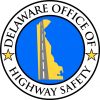DOVER (OCT. 29, 2021) – The Delaware Division of Public Health (DPH) is providing an update on the most recent statistics related to coronavirus disease 2019 (COVID-19) in Delaware, as of 6 p.m. Thursday, Oct. 28, 2021.
- Total positive cases since March 11, 2020: 143,563
- 7-day average of new positive cases: 265.9, a decrease from 331.4 last week
- 7-day average for the percentage of total positive tests: 6.2%, a decrease from 6.9% last week
- Hospitalizations: 160, a decrease of 13 from last week; Critically ill: 26, an increase of two from last week
- Total COVID-19 deaths: 2,089
- Total COVID-19 deaths since last week: 44 (including 30 from a review of vital statistic reports)
COVID-19 Vaccinations:
- Total number of doses administered in Delaware: 1,269,957
- Percentage of Delawareans 12+ who have received at least one dose (CDC data): 79.8%
- Percentage of Delawareans 18+ who received at least one dose (CDC data): 81.5%
- Delawareans who are fully vaccinated: 532,524
Delawareans who are fully vaccinated have significant protection from COVID-19 infection, serious illness and death. All qualifying Delawareans should get vaccinated. For the latest information on the COVID-19 vaccine in Delaware, visit de.gov/getmyvaccine. Delaware’s latest COVID-19 vaccination statistics can be found under the Vaccine Tracker dashboard at de.gov/healthycommunity.
COVID-19 Case Vaccination Status Report:
The following report captures a weekly breakdown of vaccination status for cases, deaths, and hospitalizations for the time frame for Oct. 18 – Oct 24. The report highlights the significant percentage of unvaccinated or only partially vaccinated individuals comprising Delaware’s cases and hospitalizations.
|
Weekly Overview |
|
|
Unvaccinated Cases |
|
|
Total Unvaccinated / Partially Vaccinated Cases |
1603 |
|
Total Cases |
2166 |
|
Percent of Unvaccinated / Partially Vaccinated Cases |
74% |
|
Hospitalizations |
|
|
Unvaccinated / Partially Vaccinated Hospitalized Cases |
48 |
|
Total Hospitalized Cases |
71 |
|
Percent of Unvaccinated / Partially Vaccinated Hospitalized Cases |
68% |
|
Deaths |
|
|
Unvaccinated / Partially Vaccinated COVID-19 Deaths |
15 |
|
Total COVID-19 Deaths |
17 |
|
Percent of Unvaccinated / Partially Vaccinated COVID-19 Deaths |
88% |
Breakthrough Cases (cumulative since vaccinations began):
- Fully vaccinated Delawareans: 532,524
- Total breakthrough cases: 5,517 or 1% of vaccinated individuals
- Total breakthrough hospitalizations: 103
- Total breakthrough deaths: 77
A breakthrough case is defined as testing positive for COVID-19 after an individual has been fully vaccinated for two weeks or more – although it does not mean that the infection occurred after vaccination.
COVID-19 Variant Cases in Delaware:
In the last week, 118 test samples were sequenced through routine surveillance of test specimens. Of those test samples, 95 (41.1%) sequenced at the DPH Lab were positive for a variant strain, as were 23 additional specimens sequenced at an outside lab. Out of the 118variant positive samples, all were identified as the Delta strain. Due to a technical issue, the number of specimens sampled this week was reduced. The issue is being resolved.
The Centers for Disease Control and Prevention (CDC) recently updated the classifications of known COVID-19 variants. Currently, the Delta variant is the only variant being monitored by the CDC as a “variant of concern” and no other variants are currently classified as “variants of interest.” For more information regarding CDC variant classifications, visit https://www.cdc.gov/coronavirus/2019-ncov/cases-updates/variant-surveillance/variant-info.html.
DPH COVID-19 Vaccine Mobile Units:
DPH officials in partnership with medical staff from the Delaware National Guard (DNG) have launched mobile units to offer COVID-19 vaccines in underserved communities. The flu vaccine will also be available and can be administered at the same time as the COVID-19 vaccine.
The mobile units, which utilize trailers to transport the vaccine and provide vaccinations, are scheduled to visit these communities in New Castle, Kent and Sussex counties next week. COVID-19 testing will be available at each location.
Monday, November 1
Delmar Wawa, 38711 Sussex Hwy, Delmar, 10:00 a.m. – 12:00 p.m.
Laurel Royal Farm, 30983 Sussex Hwy, Laurel, 1:00 p.m. – 3:00 p.m.
Tuesday, November 2
Diamond Court, 35 Diamond Court, Harrington, 10:00 a.m. – 12:00 p.m.
Byler’s Store, 17104 S Dupont Hwy, Harrington, 1:00 p.m. – 3:00 p.m.
Wednesday, November 3
Royal Farms, 6538 Hall Town Road, Hartly, 10:00 a.m. – 12:00 p.m.
Rose Hill Community Center, 19 Lambson Lane, New Castle, 11:00 a.m. – 1:00 p.m.
Calvary Baptist Church, 410 Fulton Street, Dover, 1:00 p.m. – 3:00 p.m.
Adams Four Shopping Center, 800 West Third Street, Wilmington, 2:00 p.m. – 4:30 p.m.
Thursday, November 4
Dollar General, 701 N Porter Street, Seaford, 10:00 a.m. – 12:00 p.m.
Glasgow Trailer Court, 268 Cornell Drive, Newark, 11:00 a.m. – 2:00 p.m.
Friday, November 5
Bethel Market, 7743 Main Street, Bethel, 1:00 p.m. – 3:00 p.m.
Capital Park, 1 President Drive, Dover, 10:30 a.m. – 1:00 p.m.
Brandywine Apartments, 2726 Jacqueline Drive, Wilmington, 11:00 a.m. – 2:00 p.m.
Saturday, November 6
Tabernacle Full Gospel Baptist Church, 501 North Washington Street, Wilmington, 2:00 p.m. – 5:00 p.m.
*dates may be rescheduled if there is inclement weather
For a full list of community-based events statewide including those organized by vaccinating partners and community groups at de.gov/getmyvaccine.
Long-term Care Statistics:
As of 6:00 p.m. Thursday, Oct. 28, there have been a total of 2,918 positive COVID-19 cases involving long-term care residents, and 858 residents of Delaware long-term care facilities have died from complications related to COVID-19.
Resources:
Individuals with general questions about COVID-19 should call Delaware 2-1-1, individuals who are deaf or hard of hearing can text their ZIP code to 898-211, or email delaware211@uwde.org. Hours of operation are:
Monday – Friday: 8:00 a.m. to 9:00 p.m.
Saturday: 9:00 a.m. to 5:00 p.m.
Medically related questions regarding testing, symptoms, and health-related guidance can be submitted by email at DPHCall@delaware.gov.
Delawareans 18 or older are encouraged to download COVID Alert DE, Delaware’s free exposure notification app to help protect your neighbors while ensuring your privacy. Download on the App Store or Google Play
DPH will continue to update the public as more information becomes available. For the latest on Delaware’s response, go to de.gov/coronavirus.

